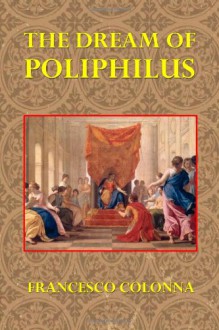The name of Poliphilus sounds agreeable to lovers of old Italian books, and to true connoisseurs of the decorative art of the Renaissance. That extraordinary allegorical and architectural romance by the art-loving Dominican Fra Francesco Colonna, "Poliphili Hypnerotomachia," is by no means among...
show more
The name of Poliphilus sounds agreeable to lovers of old Italian books, and to true connoisseurs of the decorative art of the Renaissance. That extraordinary allegorical and architectural romance by the art-loving Dominican Fra Francesco Colonna, "Poliphili Hypnerotomachia," is by no means among the rarest of fifteenth century books; but it has always been highly prized by collectors on account of the numerous spirited woodcuts which adorn it, and of its fine execution in other respects. The enthusiastic Doctor Dibdin, in his Bibliographical Decameron (vol. i. p. 194), calls the Dream of Poliphilus an "enchanting book"; and in the Bibliotheca Spenceriana (vol. iv. p. 163) he says: "Everything in it conspires to charm the tasteful collector... Ornamental capital initials, arabesque ornaments, classical compositions of figures, designed, and cut in wood, with equal elegance and felicity, a fine round Roman letter, worked in the best manner of the Aldine press — all these embellishments, executed upon paper of a beautiful tint, and fine substance, delight the eye and gratify the judgment of the virtuoso." The precious first edition of the Hypnerotomachia (The Combat of Love in a Dream) was printed at Venice by Aldus Manutius in 1499 (in folio), and bears the title — Poliphili Hypnerotomachia, vbi hvmana omnia non nisi somnivm esse ostendit, atque obiter plvrima scitv sane qvam digna commemorat. At the end, Venetiis Mense decembri. M. ID. in aedibus Aldi Manutii. There are 234 leaves, without pagination. The text is divided into two books (signatures a — z, and A — F), the first comprising four-and-twenty, the second only fourteen chapters. Notwithstanding the Latin title, the book is written in Italian, but in a curious and obscure Italian, difficult to be understood, we are told, even by Italians. The foundation of the language is said to be Lombardic Italian, but it is mixed with Latin and Greek words, and has been compared with the "learned phrase" of the Limosin student whom the noble Pantagruel encounters without the gate of Orleans, a comparison, however, which is somewhat exaggerated. Presumably the romance was first written in Latin. Leonardo Crasso, of Verona, "artium et juris Pontificis consultus," had it printed at his expense, and dedicated it in a Latin address to Guidobaldo, Duke of Urbino.
show less

